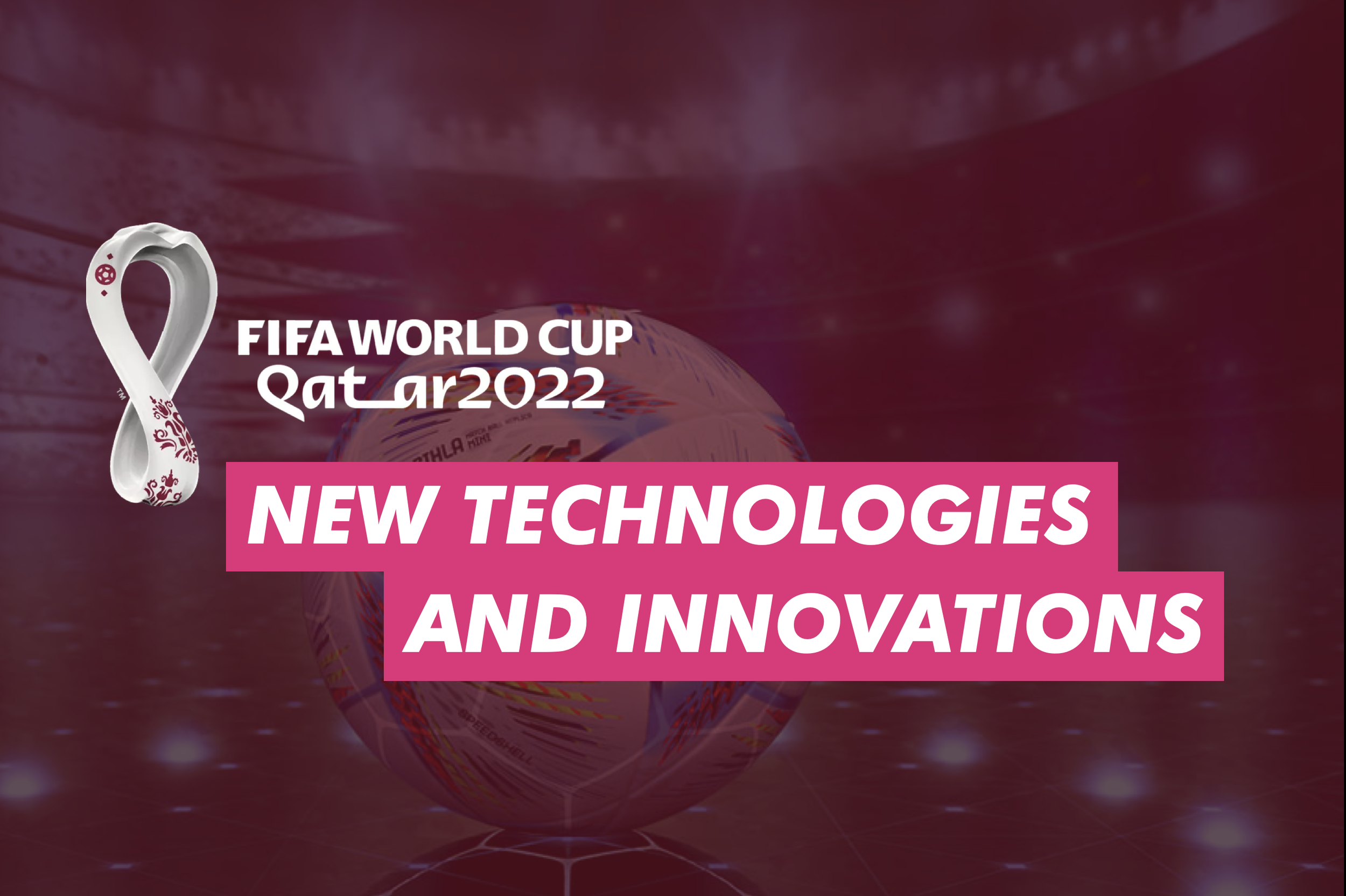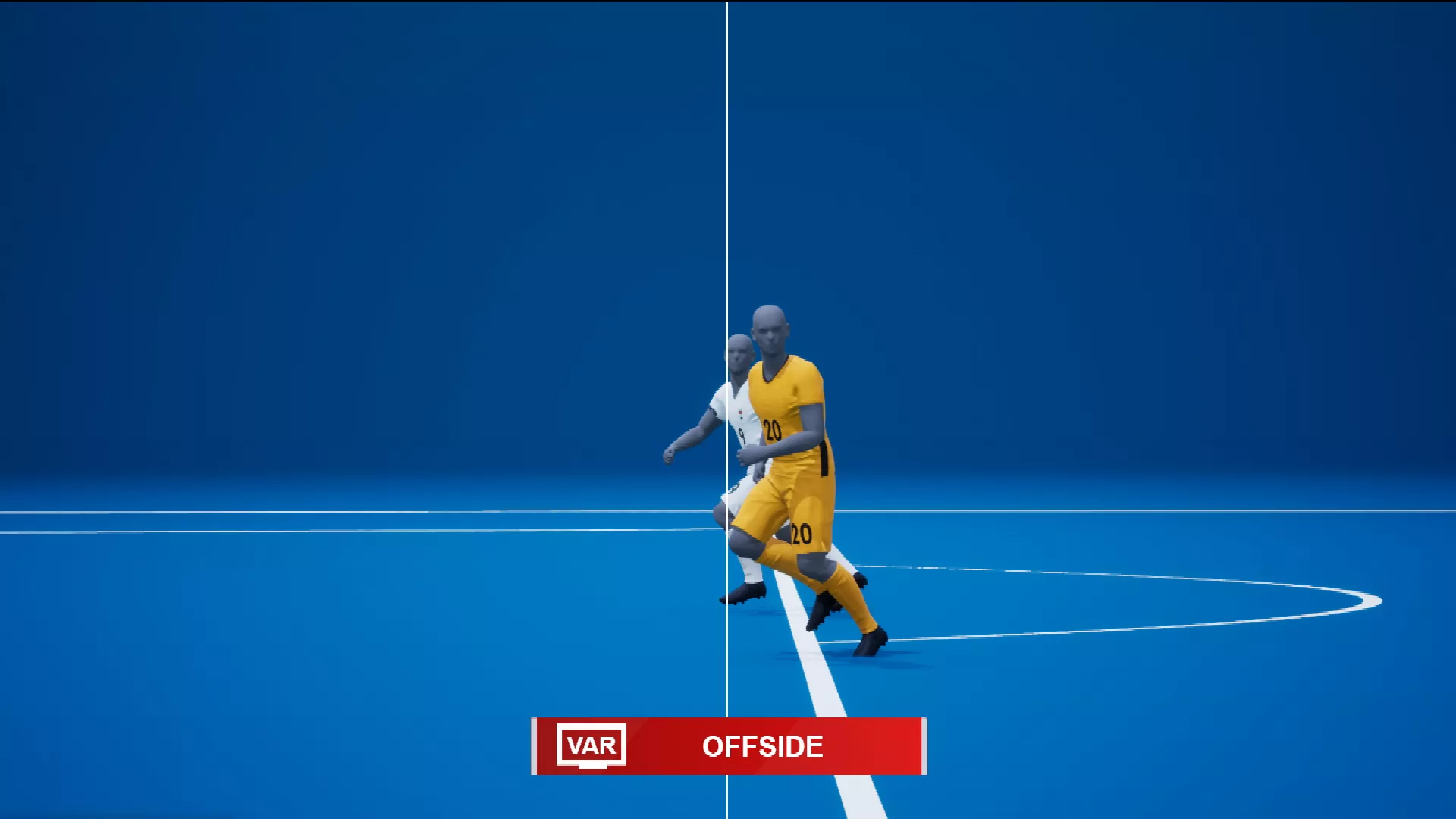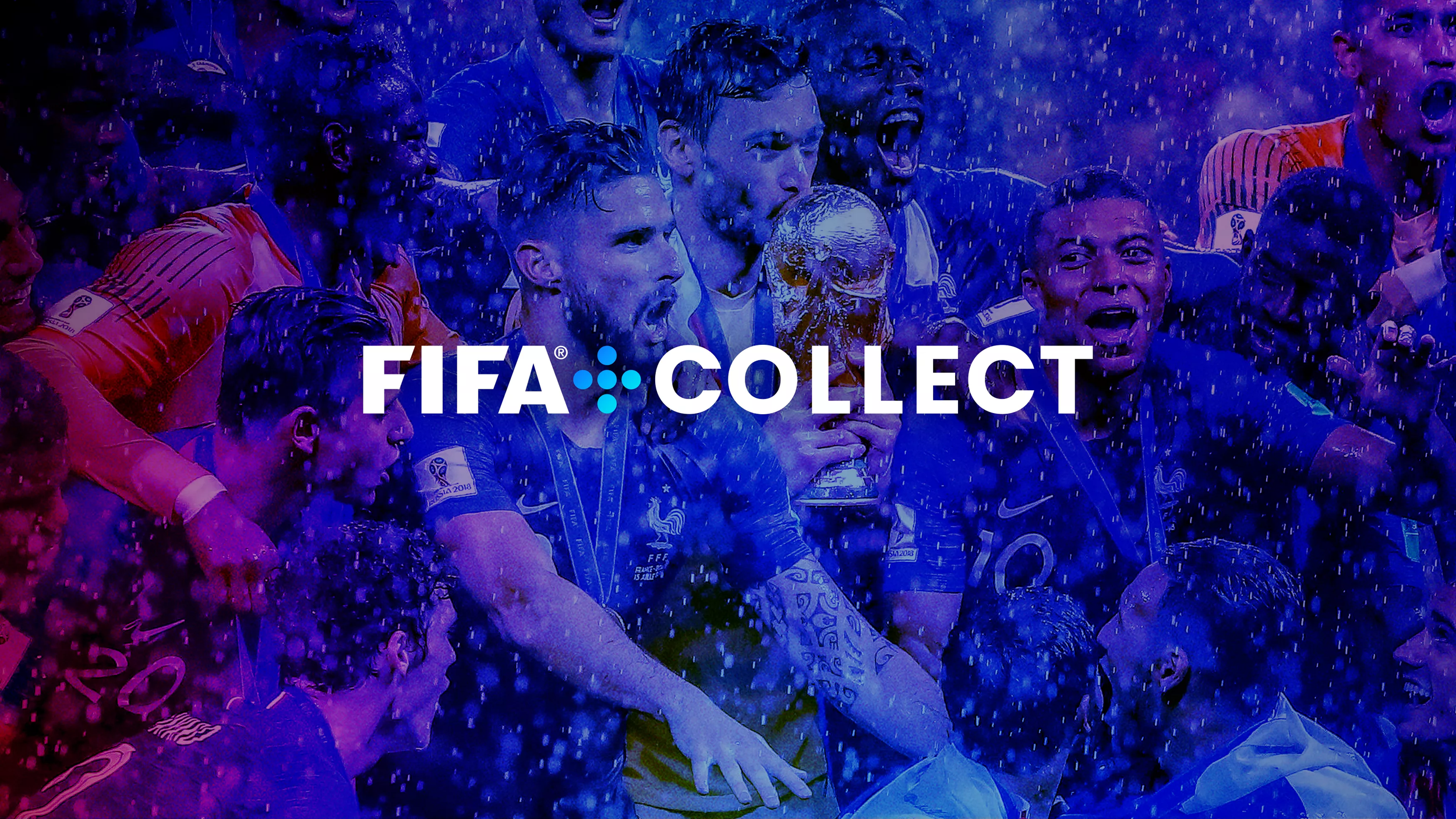New technologies & Innovations introduced at the 2022 FIFA World Cup
The 2022 FIFA World Cup is about to kick off in Qatar this week with the opening game between Qatar and Ecuador; it is one of the most awaited competitions for fans and players who can shape football history in their way.
For this 2022 edition, FIFA also decided to take technological innovations further by implementing new projects to improve the fan experience, player performance, and the game itself. In this latest article, we will go through these main innovations and new technologies used during the competition to provide a World Cup in line with our time.
Officiating: FIFA Semi-Automated Offside Technology
For the 2014 FIFA World Cup in Brazil, FIFA implemented goal-line technology to determine whether the ball had crossed the goal line. In 2018, the international federation successfully introduced VAR Technology to support the referee's decision-making process in specific match situations such as penalty or red card decisions. For the 2022 edition, FIFA is about to introduce semi-automated offside technology, as announced back in July 2022.
Press Release FIFA Semi-automated offside technology
In short, this new technology provides an automated offside alert to the referee in just a few seconds after being automatically detected and manually validated by the video match officials inside the video operation room. This technology uses 12 dedicated tracking cameras mounted underneath the stadium roof to track the ball and up to 29 data points of each player 50 times per second, calculating their exact position on the pitch. The 29 collected data points include all limbs and relevant extremities to make offside calls. The semi-offside technology was successfully trialed at the FIFA Arab Cup 2021 and the FIFA Club World Cup 2021.
The semi-offside technology is backed up by another technological innovation developed in partnership with Adidas and which is vital to the proper functioning of the semi-automated offside technology, a connected ball.
Sensors are positioned in the centre of the ball and will send ball data to the video operation room 500 times per second, allowing accurate detection of the kick point.
Johannes Holzmüller, Director of Football Technology & Innovation at FIFA, said, “This technology is the culmination of three years of dedicated research and testing by FIFA and our partner adidas to provide the best possible experience for the referees, teams, players, and fans who will be heading to Qatar.”
Press Release: Adidas Connected Ball Technology
Introducing new technologies in sports to improve decision-making processes is increasingly important. It enables building a culture of transparency and trust, which is mandatory for making the game fairer. But beyond implementing these new technologies, their live usage and seamless implementation also plays a key part. Remember when FIFA introduced the VAR: it has caused a lot of debate about its use, the decisions made through it, the fact that it breaks the "authenticity” of the sport, etc. Some of these debates are still going on and will slowly disappear as soon as the frame and the processes are further enhanced.
Semi-offside technology is, at some points, different as it doesn’t involve the official referee, although there is still a manual validation before the decision is made. Thus, one main challenge in gaining public acceptance will be seamless use and smooth integration into the game.
On top of this, one of the essential aspects of integrating or developing new technologies is collaborating with the right technology provider that will fit your expectations. By working with Adidas to create the connected ball (one of the main pieces of the Semi-Automated Goal line technology), FIFA could rely on the German group's manufacturing and technological experience to centralise the production and not increase stakeholders' involvement in the process.
Going further than pure officiating needs, this new technology can also serve other purposes by enhancing the overall fan experience through the provision of new data points and so new ways to tell and show the game in real time.
Performance: Player Data Application
In September 2022, FIFA revealed the development of the FIFA Player App in collaboration with FIFPRO, the global representative of professional footballers. This new mobile application aims at allowing players to access their performance data shortly after each match. There will be three different kinds of data: Enhanced football data metrics, Physical performance metrics, and enhanced football intelligence metrics.
Johannes Holzmüller, FIFA Director of Football Technology & Innovation, said: “For the first time at a FIFA World Cup, not only the participating teams but also all players will have the opportunity to get direct access to their performance data and the related video clips after each match. This player-centric development is based on direct feedback from the players. It is another great example of how FIFA is using technology to the best of its potential by improving the football experience for the key actors on the pitch.”
Additionally, multiple action photographs taken during critical moments of each FIFA World Cup match will be made available to each player. Players can save or share the photos on social media with their favourite match statistics directly from the app.
Since the beginning of data collection in professional football, football stakeholders have taken significant steps to collect more sensitive personal data related to players’ health and performance. By giving them access to their data, FIFA encourages players to make better-informed choices and improve their performance throughout the competition. In providing such data to all players, FIFA also tackles the need for fair and equitable competition since some players and teams may have gained a significant advantage over the past years by accessing and mastering players data.
Beyond the large amount of data available at the end of each game for players, one other aspect of the application draws our attention and deserves a showcase. Players will have access to photos of key moments during each match and can share them directly from the app.
With such a feature, FIFA offers fans unique content about players' performance and immerses them further in the competition. By relying on players to share the behind-the-scenes stories of the competition, FIFA ensures to reach as many fans as possible worldwide, as these days, athletes have a community that is as large as sports organisations.
Going forward - Podcast: FIBA Media - Redesign Content Distribution For a Better Fan Experience
Digital Experience: FIFA+ Collect
Over the past two years, many sports organisations have entered web3 through various initiatives to build their own culture of fandom and engage with fans in brand-new ways. FIFA is one of these. The football governing body has teamed up with several technology partners to create its Web3 universe with a new digital world and some digital collectibles.
In September, the football governing body announced the launch of FIFA+ Collect, allowing fans to own and collect FIFA World Cup and FIFA Women’s World Cup moments as a unique digital collectible. The blockchain platform, powered by Algorand, a proof-of-stake Ethereum and Solana alternative, will see the best moments of Qatar 2022 turned into digital collectibles.
Press Release: FIFA to launch FIFA+ Collect
FIFA is a new big player entering that space and could be a significant driver in the mass adoption of NFTs (FIFA prefers to call them digital collectibles like many other organisations today). The first figures that FIFA will share will tell us more about fans' reactions to this new activation. In any case, availability will be necessary: Algorand’s blockchain is known to be a low-cost, carbon-neutral blockchain accessible via multiple currencies and payment methods. This, combined with a great platform and a robust user experience, could be the secret sauce for a global reach and a vast adoption rate.
If FIFA is looking to diversify its revenues with this new platform, there’s no doubt that to make them very attractive on a long-term basis; it will need to bring utility on top of it. For now, we don’t know much about this, but this is probably one of the hottest topics in the NFT space regarding engagement and retention. Let’s see if FIFA has planned something shortly by which fans and active users can benefit from physical activations and rewards beyond their digital engagement.
Gaming: FIFA & Roblox
Later, in October 2022, FIFA and Roblox announced an exciting collaboration to develop FIFA World. This is a new online world for all football fans to hang out, earn rewards and collect exclusive virtual items through various skill games and multiple collectors’ challenges.
“As part of our commitment to grow football and develop ways for new fans to engage with the sport, FIFA’s immersive experience will provide football fans with a hugely exciting new way to interact with friends, celebrate the rich culture and heritage around the world’s biggest sports competition, and demonstrate their creativity and national pride through various features and mechanics,” said FIFA Chief Business Officer, Romy Gai.
FIFA also recently announced a portfolio of web3 games to entertain football fans. The international federation teamed up with blockchain-powered video game companies Uplandme, Matchday, Phygtl, and Altered State Machine to launch four metaverse games ahead of the World Cup.
Altered State Machine is an AI-powered game to predict results and win prizes. It has an extended mode that enables players to create a team of four fully customised digital collectibles to train and trade to compete in the AI League Game.
Upland is a property-trading, city-building metaverse designed for players to explore cities, collect properties, and meet other Uplanders. They have developed a World Cup village and digital collectibles to be used in the game.
Matchday is a prediction game based on football cards using the Solana blockchain, and we don’t know much about Phygtl for now as their website is still in development.
These games will offer new innovative, immersive and engaging activations to make fans’ experiences more fun and appealing. FIFA Chief Business Officer, Romy Gai, said: “This is a hugely exciting group of partnerships that we’ve entered into as we embrace a new, digitally-native football fan and engage with them in the spaces that we know they are already active within.
With such activities in the gaming space, FIFA aims to keep the next generation of fans engaged and make them part of the experience with tools and platforms they are more familiar with. But as these younger generations are increasingly accustomed to these games and platforms, their experience expectation is high. If the experience is deceptive, it will likely play against FIFA’s credibility.
When it comes to the metaverse or virtual worlds, many big brands are jumping into that space with platforms like Roblox, The Sandbox, etc. Some of them do it just because they feel they will miss something if they don’t. But if you want it to succeed, you must develop something new, engaging, innovative, and appealing. These new games have to be taken with caution as to their purpose for the fans. Obviously, FIFA is looking to diversify its revenue streams, but this should be done carefully to keep the fans entertained and devoted. As they bring the money in, this is the main reason to make those games successful.
This 2022 FIFA World Cup will bring many new technological innovations to improve the game, player performance, and fan engagement worldwide. Of course, this list is not exhaustive, but it sums up the various hot topics in our industry today. And despite the political context surrounding this event, FIFA has been working hard to deliver ambitious projects and premium activations. Now it is time to test and enjoy them during the competition and wait for possible shared results after the World Cup.







